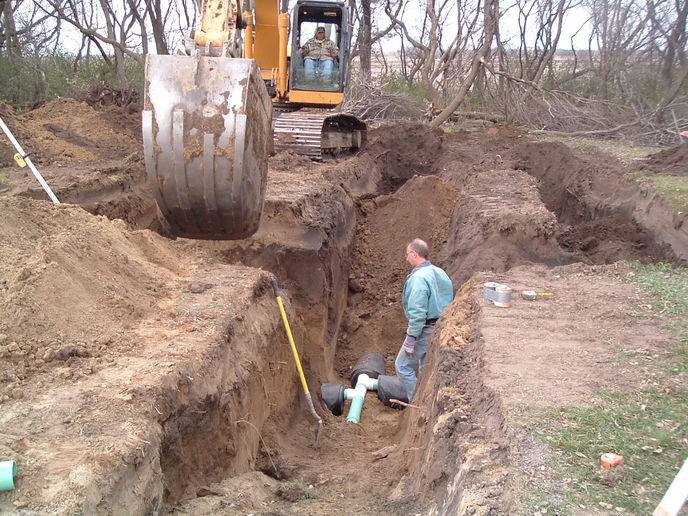I found some pics my wife took of the installation nine years ago. It looks like it's much deeper than you guys suggested, and no gravel. I had planned to dig for the junction box this weekend, but it looks like they just used a couple of Tees instead of a box. Also, looking at another picture, they had pulled up an old rusty Y pipe. I'm guessing the draintile around the foundation went into the old leach pit (but bypassed the septic tank). There is a 4" wye on the invoice, so maybe that's what they did this time also.
I had just moved here from a much warmer climate with clay soil and was assured the gavel-less tile would work in our sandy soil and assumed that it may have needed to be deeper in the cold. I also really wanted to believe it would work there, as I didn't want to pump it uphill and thought I had too much drop going the other way -- which I also know now is very soupy most times of the year. Where it is now is probably the best place if it's still workable. I'm still looking for somebody somewhat local that could actually tell me what I need instead of just digging some more trenches and closing it back up again.

I had just moved here from a much warmer climate with clay soil and was assured the gavel-less tile would work in our sandy soil and assumed that it may have needed to be deeper in the cold. I also really wanted to believe it would work there, as I didn't want to pump it uphill and thought I had too much drop going the other way -- which I also know now is very soupy most times of the year. Where it is now is probably the best place if it's still workable. I'm still looking for somebody somewhat local that could actually tell me what I need instead of just digging some more trenches and closing it back up again.


